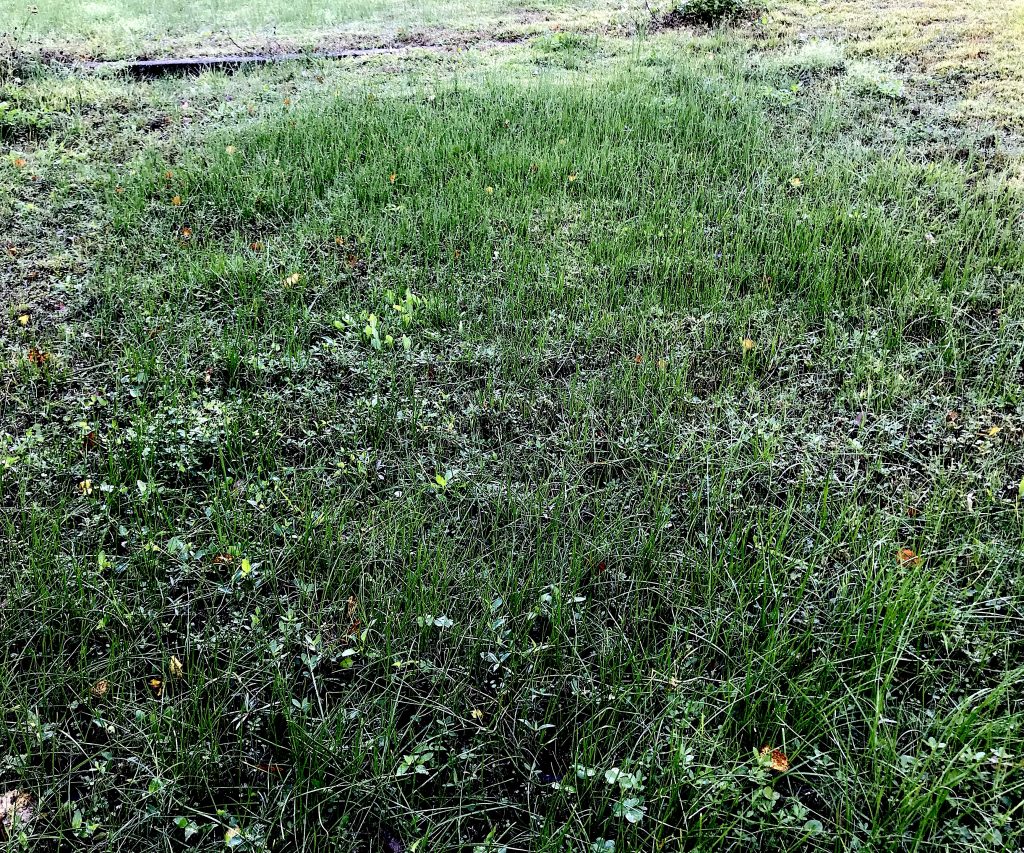
Dark Green Wild Garlic filling a low ditch in Largo Florida. In a few month there will be thousand of garlic cloves here… if they don’t mow it. Photo by Green Deane.
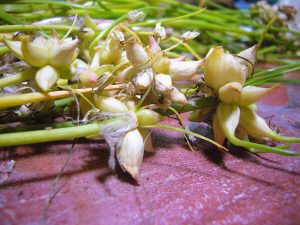
Wild Garlic puts the cloves on top. Photo by Green Deane
Plants give you something to look forward to especially if you know where and when to look. We usually harvest Wild Garlic in April because that is when they are the easiest to spot. The species puts garlic cloves on top of the plant and small onions below ground. It also likes damp ground. On the presumption they should be up now I went looking for Wild Garlic in Eagle Lake park this past Saturday and found two patches. As the entire plant is edible one does not have to wait until April to find and use them. This species is also called Wild Onions and is related to “Ramps” found further north. To read more about this species go here. A video on them is here.
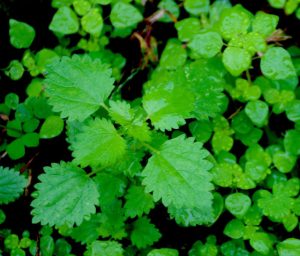
Stinging Nettles are making their seasonal debut. Photo by Green Deane
We found several other species this weekend that are starting their seasonal run. Among them are Chickweed, Goosegrass, Sow Thistle and Stinging Nettles. Last week we saw Chickweed in Gainesville and this Sunday in Orlando. Video here, article here. Goosegrass is still small and was seen along the Seminole-Wekiva Bike Trail. It’s best consumed when young though easier to locate when older. I need to make a video about them this week I think. You can read about Goossegrass here. Sow Thistles can be found nearly anytime but they thrive in our cooler months and there have been sporadic sitings. You can read about them here and a video here. Besides Chickweed the most anticipated winter species is our local Stinging Nettle in the genus Utrica (and not to be confused with Spruge Nettle with is much different and in the genus Cnedoscolus.) Officially there are three Urtica species in Florida but the other two are rare. U. dioica is found only in Alachus County and probably came with northern hay imported for horses there. U. urens is found in four counties: St. Johns, Lake, Orange and Leon. You can read about Stinging Nettle here and watch a video here. Straggling along and worth mentioning are Dandelions. They like acidic soil and cool weather and Florida is a hot limestone plate. Dandelions are at their best in our cooler months. Look for them in lawn-like grass near oaks. They are about a quarter the size of up north. You read about them here and a see video here.
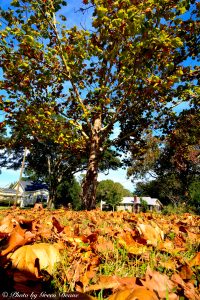
Sycamores drop a lot of leaves.
If Longfellow had lived elsewhere — say Europe — he might have penned in his famous poem: “Under the shedding Sycamore tree the village smithy stands.” As it was Longfellow wrote about the mighty American chestnut which sadly because of a blight is nearly no more. And while mentioning Longfellow take a look at his picture below left. Most of the photos of him show an old bearded man. This was taken when he was much younger, in 1855, when photography was young, too. And unlike other pictures from that era it’s not staged or posed. It’s more natural and gives us a glimpse of the man and personality. There’s a bit of destiny in Longfellow’s eyes. And what did he do right after the photo was taken? Go out to dinner because he was already dressed up? Or tell the photographer he’s pay him for the (then) very expensive photo next week when one of his new poems sold? When I see old photos like this I wonder what the next moment was like, when they broke pose and went on with living. Photos are frozen slivers of time.
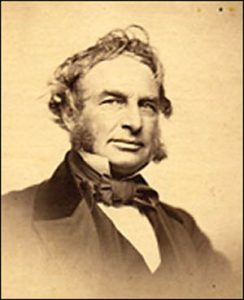
Henry Wadsworth Longfellow, age 48
Unlike Longfellow’s chestnut tree the Sycamore gets a bad rap because of what you see in the picture above, leaves…. lots of large leaves in the yard. To me it’s attractive fall colors and mulch for the lawn but it’s a headache for homeowners who want carefree landscaping. More to our interest Sycamores are forager friendly. The sap is drinkable and one could make a syrup out of it if one wanted to spend the time and energy. The sap tastes like slightly sweet water and it is already filtered by the tree so also quite safe to drink. The wood is inert so it can be used in a variety of ways with food or cooking, from skewers over the campfire to primitive forks et cetera. To read more about the maligned Sycamore go here.

Classes are held rain or shine or cold.
Foraging Classes: Because of the holiday weekend coming up there is one class each weekend. My class this Saturday is mid-state at Ft. Meade then next week Port Charlotte.
Sunday December 22nd, Ft. Meade Outdoor Recreation Area, 1639 Frostproof Highway, Fort Meade, FL 33841. (Frostproof Highway is also Route 98.) 9 a.m to noon. Meet at the second set of bathrooms (in the middle of the park) which is due south from the highway.
Saturday December 28th, Bayshore Live Oak Park, Bayshore Drive. Port Charlotte. Meet at the parking lot at the intersection of Bayshore Road and Ganyard Street. 9 a.m. to noon.
Saturday, January 4th, Mead Garden, 1500 S. Denning Dr., Winter Park, FL, Meet by the restrooms. 9 a.m. to noon. (Don’t confuse this with Ft. Meade which is a different location above.)
Sunday, January 5th, Dreher Park, 1200 Southern Blvd., West Palm Beach, 33405. Meet just north of the science center. 9 a.m. to noon.
For more information, to sign up for a class, or to prepay go here.
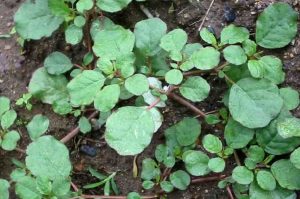
Trianthema portulacastrum, Desert Horse Purslane, a potential edible that on a glance can resembles purslane or the Tar Vine.
I’ve noticed a plant locally that looks like Tar Vine. I have foraged Tar Vine and this plant is similar but it is not quite. It is very tempting to make it fit the Tar Vine description, particularly when the plant hasn’t blossomed. You must avoid that. Waiting for the blossom is always good form. None of us are so hungry we must eat a new wild plant immediately Take your time. The look of Tar Vine that I have in my head lets me see similar pattens in this new plant but also tells me it is not the Tar Vine. I think it might be Trianthema portulacastrum, a possible edible. My problem plant can also resemble purslane at times. You can read more about the “Desert Horse Purslane” here.
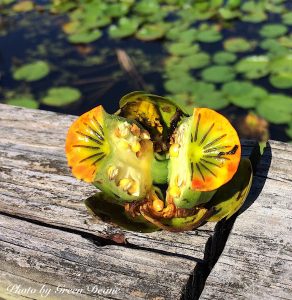
Yellow Pond Lily seeds resemble corn kernels. Photo by Green Deane
Want to identify a plant? Perhaps you’re looking for a foraging reference? You might have a UFO, an Unidentified Flowering Object, you want identified. On the Green Deane Forum we — including Green Deane and others from around the world — chat about foraging all year. And it’s not just about warm-weather plants or just North American flora. Many nations share common weeds so there’s a lot to talk about, such as the one to the left. There’s also more than weeds. The reference section has information for foraging around the world. There are also articles on food preservation, and forgotten skills from making bows to fermenting food. Recent topics include: Asystasia gangetica aka Chinese Violet or Ganges Primrose, Armillaria mellea Ringed Honeys, Acorn Treatment Question, Acorn Questions Any Poisons? A Cure For The Common Cold, Lactifluus piperatus, Elderberry Capers? You can join the forum by clicking on the button on the upper right hand side of this page.
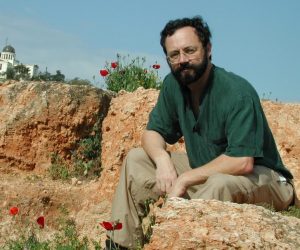
The Nine DVD set includes 135 videos.
Though your foraging may drop off during the winter it’s a great time to study wild edibles with my nine DVD set. Each DVDs has 15 videos for 135 in all. They make a great Christmas gift. Order today. Some of these videos are of better quality than my free ones on the Internet. They are the same videos but many people like to have their own copy. I burn and compile the sets myself so if you have any issues I handle them personally. There are no middle foragers. And I’m working on adding a tenth DVD. To learn more about the DVDs or to order them click here.
 Donations to upgrade EatTheWeeds.com have gone well. Thank you to all who have contributed to either via the Go Fund Me link, the PayPal donation link or by writing to Green Deane POB 941793 Maitland FL, 32794. There are many needs left such as expanding the foraging teacher page, the page on monotypic edibles and the Plant Archive page. There’s always something and such things get more complex and expensive every year.
Donations to upgrade EatTheWeeds.com have gone well. Thank you to all who have contributed to either via the Go Fund Me link, the PayPal donation link or by writing to Green Deane POB 941793 Maitland FL, 32794. There are many needs left such as expanding the foraging teacher page, the page on monotypic edibles and the Plant Archive page. There’s always something and such things get more complex and expensive every year.
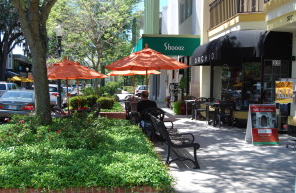
Meet in front of Panera’s in Winter Park.
And this Friday, December 20th, will be my ninth, free Urban Crawl, a foraging class held in downtown Winter Park. We meet at 10 a.m. in front of Panera’s, 329 N. Park Avenue (that’s on the north end of Park Avenue, not the south end.) There is free parking west of Panera’s in the parking garage, levels four and five for at least two hours. If you park further way you can get three hours without police scrutiny. We wander around Winter Park stopping at about half way for coffee and a bathroom break at Starbucks on the south end of Park Avenue. We’re usually done by noon or so. No reservation necessary.
This is weekly newsletter 384, If you want to subscribe to this free newsletter you can find the sign-up form in the menu at the top of the page.
To donate to the Green Deane Newsletter click here.


Dude, you have adds for herbicides on you page about eating weeds😶
1) I am not a dude. I am of the generation in which calling someone a “dude” is an insult. And 2) I have not control over the ads placed on my pages. One fills out a preference form and that is the end of it.